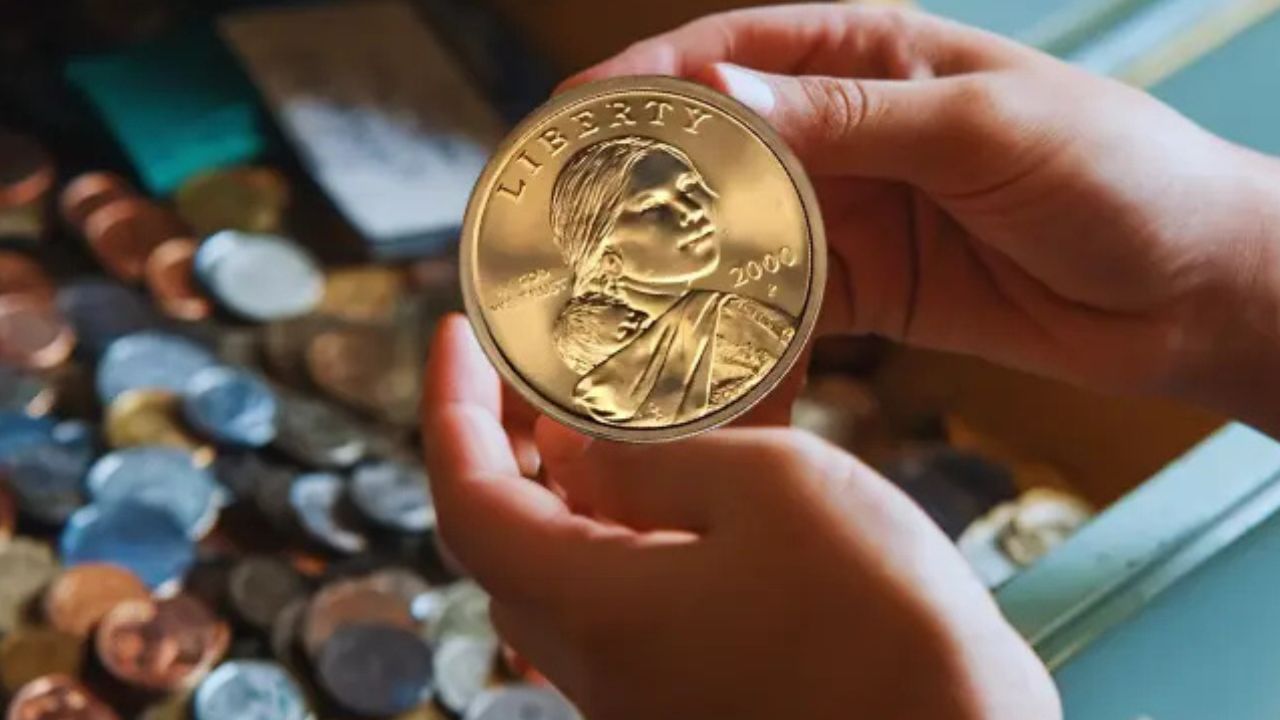For years, a worn Sacagawea dollar sat unnoticed in a family’s coin jar, often mistaken for a game token or arcade coin. Treated like everyday change, it was casually mixed with tokens from local arcades and overlooked—until recently, when it revealed its true, astonishing value.
A Simple Mistake with an Extraordinary Outcome
The discovery happened when a teenager in Oregon was sorting through an old drawer filled with miscellaneous coins, outdated tokens, and pocket change. Among the collection was a Sacagawea dollar, its golden hue blending in with other tokens. At first, the teen nearly discarded it, assuming it was just another token from a local arcade or transit system.
But a closer look at the coin’s weight and design sparked curiosity. Seeking answers, the teen posted pictures on an online coin forum. The response was swift and surprising: “Get this coin professionally appraised. It might not be just a token.”
What Makes This Sacagawea Dollar So Valuable?
What seemed like an ordinary dollar was actually a rare 2000-P Sacagawea dollar featuring a remarkable minting error known as a “mule.” This type of error occurs when a coin is struck with mismatched dies — in this case, the obverse (front) of a Sacagawea dollar and the reverse (back) of a Washington quarter.
Mule errors are extremely rare and highly sought after by collectors. Only a handful of these error coins are known to exist, making them some of the most valuable modern U.S. coins. This particular coin’s rarity, combined with its historical significance and collector demand, pushed its value to an eye-popping $950,000.
Professional Authentication and Auction Success
After the family had the coin authenticated and graded by trusted third-party experts, it was confirmed as an ultra-rare mule error. Interest from collectors and auction houses surged almost immediately, with offers reaching six and seven figures within days.
The coin was listed for auction with a reserve price of $750,000. What followed was a fierce bidding war that ended with a final hammer price of $950,000 — a staggering figure that surprised even veteran numismatists.
Why Was It Mistaken for a Token?
The Sacagawea dollar’s unique golden color and smooth edges often cause confusion. Unlike quarters, these dollars don’t have the usual reeded edges, which leads many to mistake them for arcade tokens or promotional coins, especially among younger generations unfamiliar with early 2000s currency.
Experts warn that many other rare U.S. coins could be similarly overlooked, still hiding in circulation or family collections under the guise of everyday tokens.
Could More Rare Coins Be Out There?
This remarkable find has reignited interest in examining everyday coins closely. Numismatic experts believe there may still be mule errors and other rare mistakes circulating unnoticed in wallets, drawers, or coin jars across the country.
Since the U.S. Mint never intended these error coins to enter circulation, any accidental release makes them exceptionally valuable and highly collectible.
Final Thoughts
In a world where loose change often feels worthless, stories like this remind us that real treasure can still be hiding in plain sight. What once seemed like a simple token changed a family’s financial future overnight.
So next time you come across a Sacagawea dollar or any unusual coin, take a moment to look twice — it could be worth far more than its face value, maybe even close to a million dollars.
